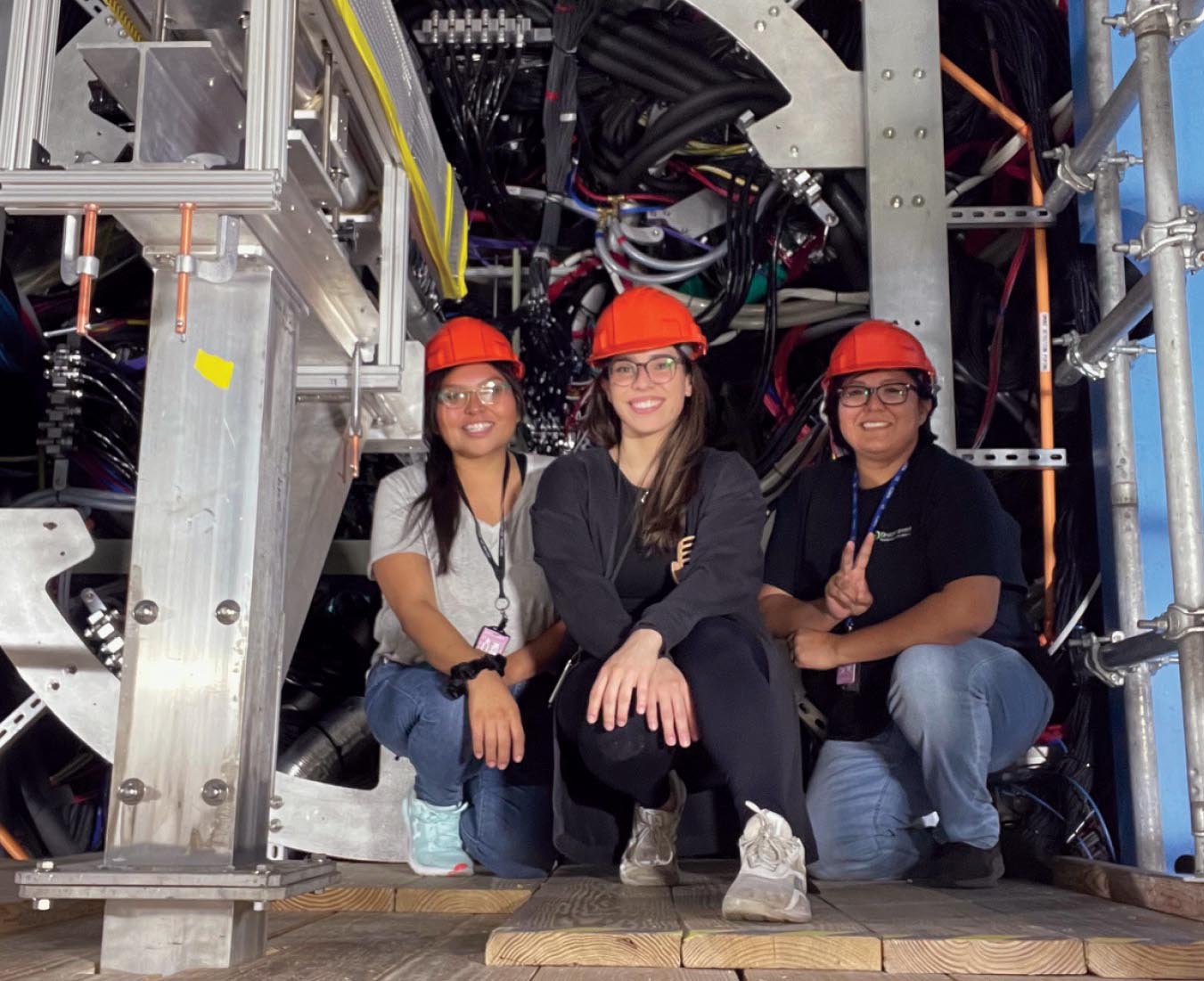Indigenous women thrive in Los Alamos internships
DOI: 10.1063/pt.khdd.ovmp
When Victoria Nofchissey spotted a flyer for a program called Engaging Indigenous Women in Nuclear Physics, she thought, “That’s me!” She was a sophomore at Fort Lewis College in Durango, Colorado. Growing up without water or electricity on the Navajo Reservation in Arizona, she says, “I didn’t imagine I had the possibility of being a physicist.”
A few months later, in the summer of 2023, she was at Los Alamos National Laboratory.
Indigenous women in STEM “are the minority of minorities,” says Cesar Da Silva. (According to data from the Department of Education, Indigenous women earned 0.2% of bachelor’s degrees in the physical sciences in 2021. See the interactive tool at https://ww2.aip.org/statistics/physics-engineering-degrees-earned

Elaina Saltclah (left) and Arielle Platero (right) went to Los Alamos National Laboratory as part of the Engaging Indigenous Women in Nuclear Physics pilot program. Bade Sayki (center) is a student at the University of Colorado, Boulder, who is working full time at the lab as a graduate research assistant.
ELAINA SALTCLAH

The program has grown each year, from two to four to—this year—six participants. Students spend 10 weeks in the summer at Los Alamos. They code, analyze data, and build detectors. They attend and present at conferences. Some visit other national labs. They meet scientists at Los Alamos and see first-hand how science is done.
Nofchissey’s internship took her to CERN for three weeks. “I was most interested in glueballs,” she says. “We look at collisions between protons and lead, lead and lead, and protons and protons to figure out if glueballs exist.” Her project is part of the CERN LHCb experiment, which studies the bottom quark to gain insights into the asymmetry of matter and antimatter in the universe.
Being part of a 1500-strong international collaboration has been “eye-opening,” Nofchissey says. “Once you specialize, everyone knows each other. It makes me happy to know there is a community out there.”
Elaina Saltclah is also Navajo and a physics major from Fort Lewis College. As an intern at Los Alamos in summer 2023, she wrote code to analyze proton–proton collisions using spherical harmonics. The internship, she says, made it clear that “this is what I want to do with my life.”
“My first encounters at Los Alamos went over my head,” she says. “But people took time to take us aside and teach us the vocabulary. The environment fosters learning.”
Importantly, Saltclah says, “the program allows us to be who we are. That means it can foster people who would otherwise be overlooked.”
Being aware and accepting of the students’ cultures is key, says Da Silva. He notes that the Indigenous students tend to be tightly connected to their families and communities. Some of them have kids. Few have been out of the area, let alone out of the country, he says. And, for example, none of the Indigenous women worked the week of the 8 April solar eclipse “for cultural reasons.”
Da Silva’s goal is to keep mentoring students, even beyond the summer program. “I want to make sure all of them continue in their careers,” he says. “It doesn’t have to be in physics. I try to help them apply for jobs in labs and for PhD studies. That is part of the program too.”
DOE and DEI
The Los Alamos program is small, but it’s a great example of what DOE is trying to do, says Harriet Kung, acting director of the agency’s Office of Science. “Physics can only excel by including more students with diverse backgrounds. They bring diverse experiences and new ways of approaching scientific problems.”
Other DOE programs in the diversity, equity, and inclusivity (DEI) space include a two-week virtual wildlife simulation camp aimed at students from Indigenous backgrounds and a partnership between Los Alamos and Navajo Technical University in Crownpoint, New Mexico, to train students to detect contamination from uranium mines and to build a particle detector for the LHCb.
On much larger scales, in the past couple of years, DOE launched the Reaching a New Energy Sciences Workforce and Funding for Accelerated Inclusive Research programs to support individuals and institutions that are historically underrepresented in STEM. (See Physics Today, May 2024, page 28
The federal government’s efforts contrast with the anti-DEI legislation that is popping up in states around the country (see Physics Today, April 2024, page 22
Until recently, Fort Lewis College was the sole source of physics students for the Los Alamos program. The college is a federally designated Native American–serving nontribal institution and the highest producer of Indigenous STEM bachelors in the US. This year, two students from Navajo Technical University will join the program.
“For women in STEM, especially minority students, being able to see themselves in a career path is important,” says Laurie Williams, an engineering professor at Fort Lewis College. “I have seen such a difference in the students after just one summer in the Los Alamos internship program. They have more confidence and higher aspirations.” The internship is hitting all the high points for transforming their trajectories, says Williams. “The students feel they are having an impact. That is empowering.”
More about the Authors
Toni Feder. tfeder@aip.org
